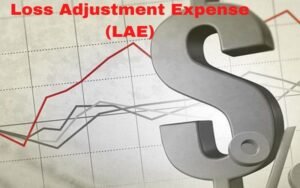Basis Risk: Meaning, Types, Formula, Examples
Basis risk is the financial risk that offsetting investments in a hedging strategy will not experience price changes in opposite directions. This imperfect correlation between the two investments creates the potential for excess gains or losses in a hedging strategy, thus adding risk to the position.
Understanding Basis Risk
Offsetting vehicles are generally similar in structure to hedged investments but are still different enough to cause concern. For example, in the attempt to hedge against a two-year bond with the purchase of Treasury bill futures, there is a risk that the Treasury bill and the bond will not fluctuate identically.
To quantify the amount of the basis risk, an investor needs to take the current market price of the asset being hedged and subtract the futures price of the contract. For example, if the oil price is $55 per barrel and the future contract being used to hedge this position is $54.98, the basis is $0.02. When large shares or contracts are involved in a trade, the total dollar amount, in terms of gains or losses, from basis risk can have a significant impact.
Other Forms of Basis Risk
Another form of basis risk is known as locational basis risk. This is seen in the commodities markets when a contract does not have the same delivery point as the commodity’s seller needs. For example, a natural gas producer in Louisiana has locational basis risk if it decides to hedge its price risk with contracts deliverable in Colorado. If the Louisiana contracts are trading at $3.50 per one million British Thermal Units (MMBtu) and the Colorado contracts are trading at $3.65/MMBtu, the locational basis risk is $0.15/MMBtu.
Product or quality basis risk arises when a contract for one product or quality is used to hedge another product or quality. An often-used example is jet fuel being hedged with crude oil or low-sulfur diesel fuel because these contracts are far more liquid than derivatives of jet fuel itself. Companies making these trades are generally well aware of the product-based risk but willingly accept the risk instead of not hedging.
Calendar-based risk arises when a company or investor hedges a position with a contract that does not expire on the same date as the position being hedged. For example, RBOB gasoline futures on the New York Mercantile Exchange (NYMEX) expire on the last calendar day of the month before delivery. Thus, a contract deliverable in May expires on April 30. Though this discrepancy may only be for a short period, basis risk still exists.
Conclusion
- Basis risk is the potential risk that arises from mismatches in a hedged position.
- When a hedge is imperfect and does not entirely offset losses in an investment, basis risk occurs.
- Certain investments do not have good hedging instruments, making basis risk more of a concern than with other assets.




















































